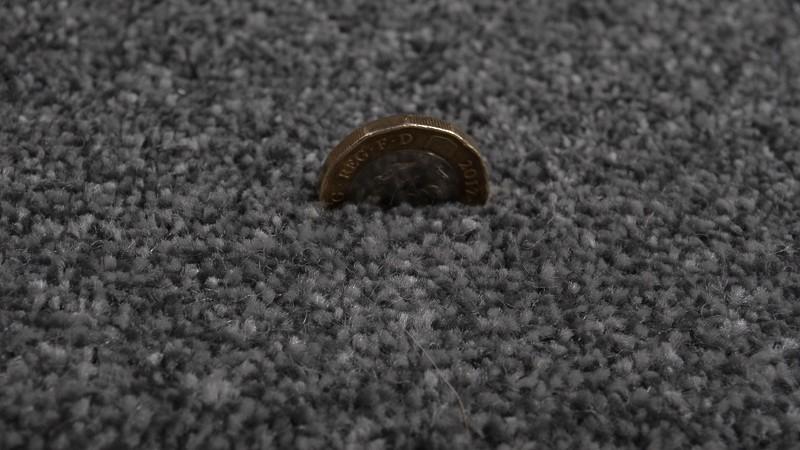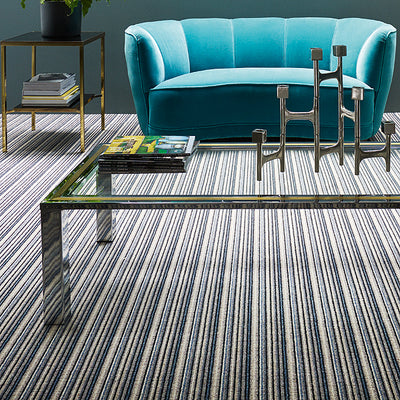
A Deep Dive Into Choosing a Thick Carpet
Quick Links
Things to consider before choosing a Thick Carpet
Introducing the Dreams Range: Redefining Luxury
Features of the Dreams Vanilla Carpet
When it comes to creating a warm and inviting atmosphere in your home, few things make as much impact as a thick and luxurious carpet underfoot. Not only do they add a plush aesthetic to your interiors, but they also bring unmatched comfort and functionality not to mention the comments guests will make on its thickness and comfort! But before diving into the world of thick carpets, let’s explore their benefits, potential drawbacks, and the types available. Plus, we’ll introduce the all-new Dreams Range, launched in 2025, which is redefining what it means to have a cosy, premium carpet in your home.

Why Choose a Thick Carpet
1. Unmatched Comfort
Thick carpets offer a soft and cushioned surface that feels heavenly underfoot. Whether you’re walking barefoot on a chilly morning or lounging on the floor with family, the dense pile ensures maximum comfort.
2. Insulation Benefits
Carpets are excellent at trapping heat, and thicker varieties are even better. They can significantly reduce energy bills during the colder months by keeping your home warmer for longer.
3. Noise Reduction
The density of thick carpets helps to absorb sound, making them perfect for busy households. They’re ideal for upstairs rooms, helping to reduce the noise of footsteps or dropped objects.
4. Luxurious Aesthetic
Nothing says luxury quite like a thick, high-pile carpet. It adds an upscale touch to any room, from living spaces to bedrooms, and complements a wide range of decor styles. Hoovering brings up the streaks and tones of the carpet, although that’s not to everyone’s taste!
Things to consider before choosing a Thick Carpet
1. Higher Cost
Premium thick carpets often come with a higher price tag, but the investment pays off in terms of durability and aesthetic appeal.
2. Pets Maintenance
If you have pets, it's important to maintain their claws to ensure they are not sharp, otherwise their claws can get caught in the plush fibres. Pets love a nice thick carpet just like us humans do, but it's important that their paws don’t damage the fibres.
3. Maintenance Requirements
Thicker carpets can trap more dust & dirt, requiring regular vacuuming. However, with the right cleaning tools, this shouldn’t be a significant concern.
Types of Thick Carpets
Saxony
Known for its soft and velvety finish, Saxony carpets are perfect for bedrooms and living rooms. Their thick pile offers a luxurious feel, but they’re best suited for low-traffic areas to maintain their pristine look.
Shag Pile
Shag pile carpets are characterised by their long, loose fibres, giving them a retro yet modern vibe. While they’re incredibly comfortable, they do require more upkeep to prevent matting.
Twist Pile
Durable and stylish, twist pile carpets are made from tightly twisted fibres. They’re ideal for busy homes, offering a balance between softness and resilience.
Loop Pile
These carpets feature uncut loops of yarn, creating a textured look. While not as soft as other thick carpets, they’re incredibly durable and stain-resistant.
Introducing the Dreams Range: Redefining Luxury
In 2025, Carpets Online proudly launched the Dreams Range, a collection designed to combine luxury, comfort, and practicality. One standout in this range is the Dreams Vanilla Thick Carpet.
Features of the Dreams Vanilla Carpet
-
Exceptional Thickness: The Dreams Vanilla carpet boasts a lush, deep pile, providing unparalleled softness underfoot.
-
Neutral Aesthetic: Its soft vanilla shade complements a variety of interior designs, from minimalist to traditional.
-
Durability: Crafted with high-quality materials, it’s designed to withstand the rigours of everyday life while maintaining its plush appeal.
-
Stain Resistance: Thanks to its advanced stain protection technology, spills and marks are easier to manage, making it an excellent choice for family homes.
- Eco-Friendly: The Dreams Range prioritises sustainability, using eco-conscious manufacturing processes.
New Thick Carpet Range - Dreams?
We have added a new 20mm thick carpet for 2025 called Dreams. Made form 100% Polyester with an amazing 1.10 gauge density, the Dreams Carpet is one of our thickest carpets. Whether you’re upgrading your bedroom, living room, or any other space, this collection promises the perfect blend of aesthetics and practicality. Our Dreams Collection Page has the complete range for you to look at. If you don’t believe us, just ask for a sample of the Dream Thick Carpet Range.
Visit For a look at a range of our thick soft carpets.
Final Thoughts
Thick carpets are more than just a flooring choice; they’re a lifestyle upgrade. With benefits ranging from enhanced comfort to improved insulation, they’re a worthwhile choice for any home. However, they do need good upkeep.
If you’re looking to elevate your interiors with a luxurious thick carpet, the Dreams Range from Carpets-Online.co.uk offers a stellar choice. Explore the collection today and experience the difference a premium carpet can make.








